I’m a laptop reviewer, and these are the only laptops creatives should buy in 2023
Buying a laptop for creative work can be a daunting challenge, and so we've broken things down by listing the best machines you can find at various prices.

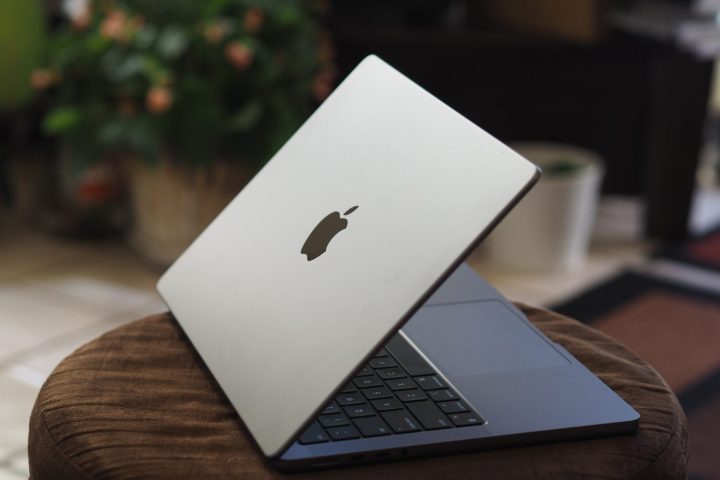 Mark Coppock / Digital Trends
Mark Coppock / Digital TrendsOne of the most popular laptop categories in recent years is laptops designed for creators, both high-end photo editors and video editors. These users have very specific needs, including fast performance to optimize workflows and displays with wide and accurate colors.
Usually, but not always, these laptops sport 15-inch displays or larger (16-inch panels are becoming the new standard), and they offer high-end CPUs and discrete GPUs that contribute to speeding up the most important creative processes. They’re also expensive laptops, so we decided to break down the laptops we’ve reviewed and provide the best options at each price.
Less than $1,500 — Acer Swift X 14
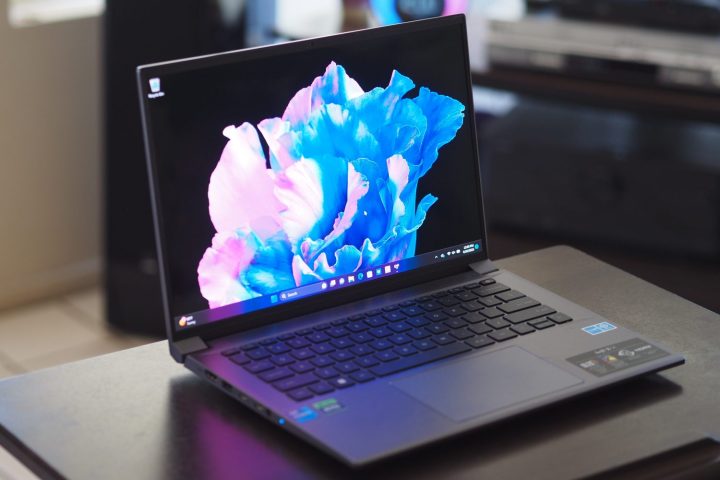 Mark Coppock/Digital Trends
Mark Coppock/Digital TrendsThe Acer Swift X 14 barely fits into this pricing category, listed in the Acer store at $1,499. But you won’t find another laptop for less that provides equivalent performance and display quality. For that price, you get an Intel Core i7-13700H, 16GB of RAM, a 1TB SSD, an RTX 4050, and a 14.5-inch 2.8K OLED display.
It’s not the highest-specced laptop on our list, but it performs admirably for the price. It keeps up in CPU-intensive benchmarks, and it scores a solid 849 in the Pugetbench Premiere Pro benchmark. That’s behind our leaders but still good enough for demanding work, and it all fits into a 14-inch laptop chassis that’s more portable.
The Swift X 14’s OLED display is as awesome as usual, with 96% of Adobe RGB and 100% of DCI-P3 coverage with the best accuracy on our list at a DeltaE of 0.72. Its contrast and brightness are also excellent, and it will please the most demanding creative professional.
This laptop is designed more in line with its price, which isn’t surprising. It has a simple design with a little more flexibility in the lid and chassis than the others, but it’s still a tremendous value. Its keyboard and touchpad are fine, and if it has one weakness, it’s very poor battery life.
$1,500 or more – Lenovo Slim Pro 9i
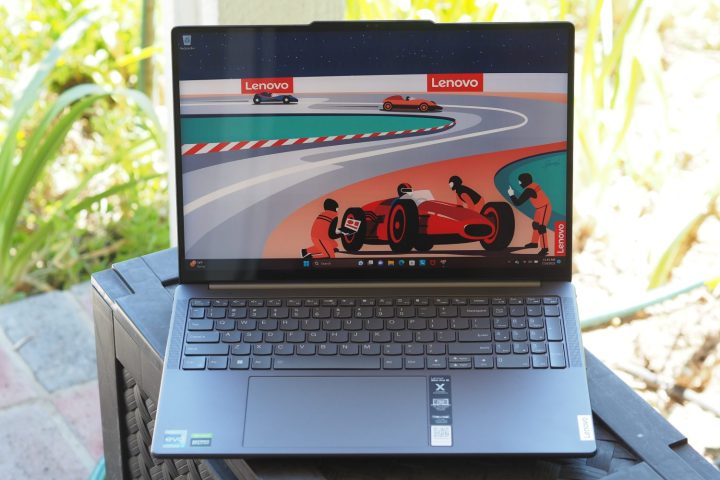 Mark Coppock/Digital Trends
Mark Coppock/Digital TrendsThe Lenovo Slim Pro 9i is a brand-new model, upsized from the elegant Slim 9i with rounded corners and a gorgeous overall design. The new model sports a 16.0-inch Mini-LED display and fast components inside, and it’s considerably less expensive than the first two machines. For $1,800, you get the Core i9-13905H, 32GB of RAM, a 1TB SSD, an Nvidia GeForce RTX 4050, and a 16.0-inch 3.2K Mini-LED display.
Although the Slim Pro 9i equips an entry-level discrete GPU, it still manages to perform extremely well. Its fast processor handles CPU-intensive processes with ease, while the GPU overperforms and helps the laptop hit 1,114 in the Pugetbench Premiere Pro benchmark in performance mode. That’s faster than both the MacBook Pro 16 and the XPS 15 and is an impressive feat.
The Lenovo Mini-LED panel has higher standard brightness than Apple’s, but its colors are slightly less wide at 88% of Adobe RGB and 99% of DCI-P3, with an accuracy of DeltaE 1.24. Its contrast in standard Windows mode is higher than IPS but much lower than either Apple’s Mini-LED display or OLED, which appears to be due to how Windows manages the display. Still, it’s an excellent option for all but the most demanding creators.
The Slim Pro 9i is a very attractive laptop and very comfortable to use thanks to its rounded edges, and it’s built fairly well. Its keyboard and touchpad are good but a step behind the leaders. And the laptop suffers from poor battery life and demands to be plugged in. But it’s considerably more affordable.
$2,000 or more – Dell XPS 15
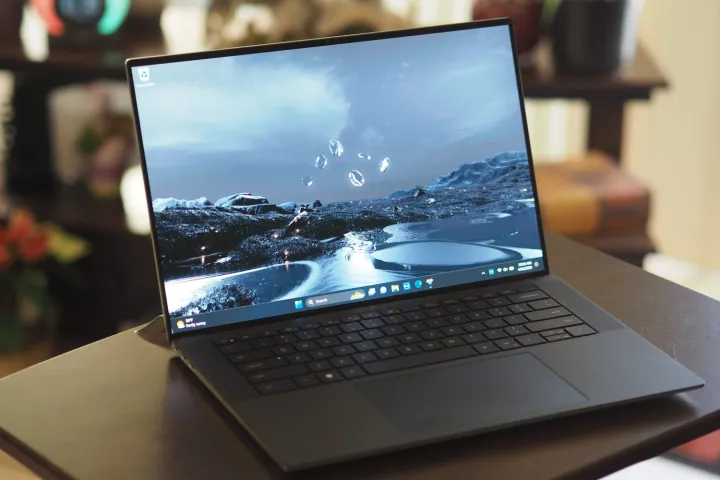 Mark Coppock/Digital Trends / Digital Trends
Mark Coppock/Digital Trends / Digital TrendsNext up is the Dell XPS 15, which stands apart as a thinner and lighter productivity machine that does double-duty as a creative workstation. It’s not the fastest laptop on our list, but it fits in nicely at $2,599 with an Intel Core i7-13700H and an Nvidia GeForce RTX 4070 GPU. The 45-watt processor sports 14 cores (six Performance and eight Efficient) and 20 threads and provides reliable performance. The RTX 4070 is a fast discrete GPU and Dell loads up the laptop by default with Nvidia Studio drivers that are optimized for apps like Adobe’s. Dell does only provide 40 watts to the GPU, which limits its performance.
In our testing, the XPS 15 was fast at CPU-intensive benchmarks and scored a strong 1,023 in the Pugetbench Premiere Pro benchmark in performance mode. That’s competitive with the other laptops on our list and can handle all but the most demanding creative workflows. You don’t benefit much from upgrading this machine to the faster Core i9-13900H CPU, because its thin chassis does limit thermal performance.
We reviewed the XPS 15 with the optional 15.6-inch 16:10 3.5K (3456 x 2160) OLED display, and it’s spectacular. It covers 96% of the AdobeRGB gamut and 100% of DCI-P3, with an accuracy of DeltaE 1.31. That’s a little lower than some others on our list but still excellent for creators. OLED provides deep contrast, just like Apple’s Mini-LED panel, although it’s not the brightest technology. It does do well with HDR content, though, which rounds it out as a great creator’s display.
The XPS 15 is another well-built laptop with contemporary good looks. Its keyboard and touchpad might not quite match Apple’s, but they’re still excellent and comfortable to use. The XPS 15 gets decent battery life, but it’s not going to last very long when rendering videos at full speed.
You could also consider the HP Envy 16, which is slightly less expensive than the XPS 15 at $2,200 for a Core i9-13900H CPU (same core and thread count as the Core i7-13700H but clocked faster), 32GB of RAM, a 1TB SSD, an Nvidia GeForce RTX 4060 GPU, and a 16.0-inch 2.8K (2880 x 1800) OLED display. It’s about as fast as the XPS 15 and offers equivalent display quality for hundreds less.
$3,000 or more – Apple MacBook Pro 16
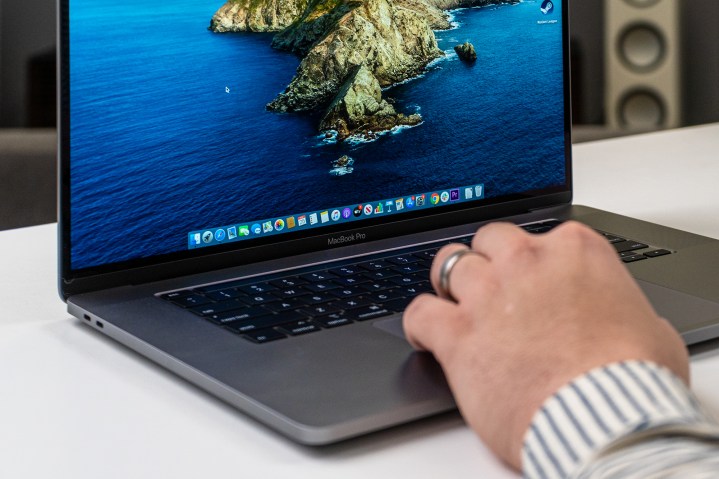
Apple’s MacBook Pro 16 is perhaps the most well-rounded laptop on our list, and among the best laptops you can buy. It’s also the most expensive. You can spend less than $3,000, but the best configuration for demanding creators is $3,499 with an M2 Max with 12 CPU cores and 38 GPU cores, 32GB of RAM, and a 1TB SSD. That machine will provide outstanding performance, and the only recommended change is to increase internal storage if you’re not using an external device. And if you’re a professional creator who benefits from every second saved in processing your work, then you can upgrade to 96GB of RAM and an 8TB SSD that will handle today’s and tomorrow’s tasks.
We tested the MacBook Pro 16 with the M1 Pro CPU and it performed extremely well. The M2 Max version will be considerably faster, as evidenced by the MacBook Pro 14 that we tested with the CPU and that achieved a great score in the Pugetbench Premiere Pro benchmark. This is an important tool for testing creative laptops because it operates in a live version of Adobe Premiere Pro and runs through a variety of processes that show how fast a laptop can handle real-world work. The 14-inch M2 Max scored 1,093 in the benchmark, which is among the leaders, and the 16-inch model will be even faster thanks to the better thermals provided by the larger chassis.
The MacBook Pro 16 also benefits from an excellent 16.2-inch Mini-LED display running at a sharp 3456 x 2234 and up to 120Hz for smoother animations. Not only is it incredibly bright and offers deep contrast for inky blacks (and great detail in pictures and video), but it also covers 90% of the Adobe RGB and 97% of the DCI-P3 color spaces, with an accuracy of DeltaE 1.04. If you work with high dynamic range (HDR) content, you’ll particularly appreciate the Mini-LED panel’s top-end brightness that can hit an eye-searing 1,600 nits according to Apple.
Of course, the MacBook Pro 16 is also an elegant and incredibly well-built laptop with the best keyboard and touchpad you can buy. And, it balances its outstanding performance with incredible efficiency, offering double the battery life of Intel laptops at 18 hours or more of web browsing and 23 hours or more of video looping. It’s the only laptop on our list that supports serious time working at full tilt without plugging in.
What to avoid
We’ve already identified what’s most important in a creator’s laptop, so it should be clear what to avoid. As discussed earlier, you’ll want to avoid lower-power CPUs, and the safest bet is to stick with Intel’s 45-watt 13th-gen, AMD’s 45-watt Ryzen 7000 series, and Apple’s M2 Pro or M2 Max. And, you’ll want a discrete GPU in Intel- or AMD-based machines.
You’ll also want to stay away from standard IPS displays unless they’ve been specifically optimized for wide colors as with the Dell XPS 17 mentioned earlier. The IPS average color width is around 75% of AdobeRGB and 75% of DCI-P3, with color accuracies closer to a DeltaE of 2.0. Those displays are fine for productivity work, but they’ll do a poor job of providing the color precision that’s required for creative work.
As long as you cover those two bases, then you can find other laptops that can work. Some gaming laptops, for example, are incredibly fast and a few equip OLED or Mini-LED displays. They do tend to be more expensive and run hot and loud, which is a downside for creative work. But if you’re a gamer, then they can provide double duty.

 Fransebas
Fransebas 































